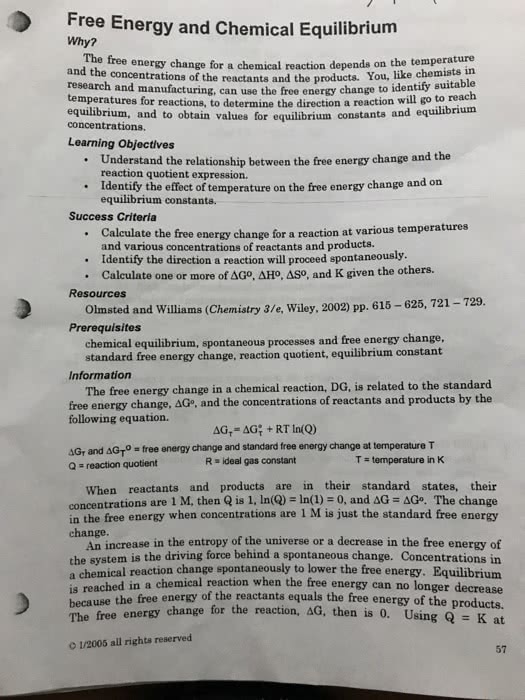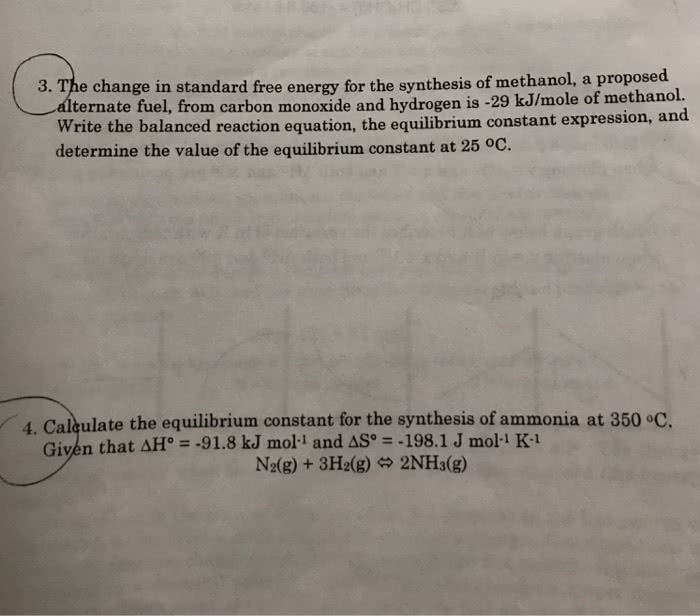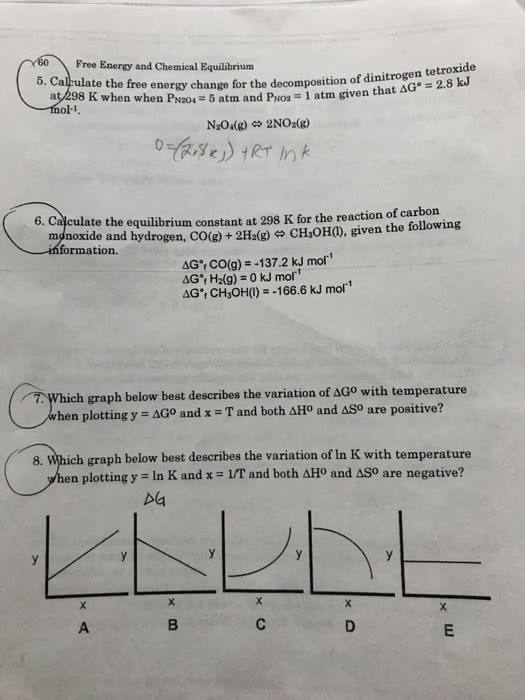CHEM10003 Lecture Notes - Lecture 22: Gibbs Free Energy, Chemical Equilibrium, Equilibrium Constant
132 views7 pages
27 Nov 2018
School
Department
Course
Professor
Document Summary
An increase in carbon dioxide in the atmosphere leads to more dissolution in water. A small change in the ph can push the equilibrium in the opposite direction and push carbon dioxide back into the atmosphere. Carbon dioxide is water soluble dissolves in water. R p, at constant t and p, (100% reactants goes to 100% products) There is a complete conversion of r to p (spontaneous) A system comes to its equilibrium when it reaches its minimum g. Equilibrium is at the minimum energy possible for the system. Forward and reverse reactions occur simultaneously and at equilibrium both have same rate. At equilibrium the concentrations have reached steady values. Whatever the initial concentrations, after a long time the concentrations reach constant values. The above is a dynamic situation because the forward and backward rates are equal. The rate of a chemical reaction rate = k[a]
Get access
Grade+20% off
$8 USD/m$10 USD/m
Billed $96 USD annually

Homework Help
Study Guides
Textbook Solutions
Class Notes
Textbook Notes
Booster Class
40 Verified Answers
Class+
$8 USD/m
Billed $96 USD annually

Homework Help
Study Guides
Textbook Solutions
Class Notes
Textbook Notes
Booster Class
30 Verified Answers
Related textbook solutions
Chemistry: Structure and Properties
2 Edition,
Tro
ISBN: 9780134293936
Basic Chemistry
5 Edition,
Timberlake
ISBN: 9780134138046
Principles of Chemistry Molecular Approach
4th Edition,
Tro
ISBN: 9780134112831
Principles of Chemistry Molecular Approach
3rd Edition, 2014
Tro
ISBN: 9780321971944
Chemistry: Structure and Properties
2nd Edition,
Tro
ISBN: 9780134293936
Chemistry: A Molecular Approach
3rd Edition,
Tro
ISBN: 9780321809247
Chemistry: A Molecular Approach
5th Edition,
Tro
ISBN: 9780134874371
Principles of Chemistry: A Molecular Approach
4th Edition,
Tro
ISBN: 9780134895741
Chemistry: The Central Science
14th Edition, 2017
Brown
ISBN: 9780134414232



